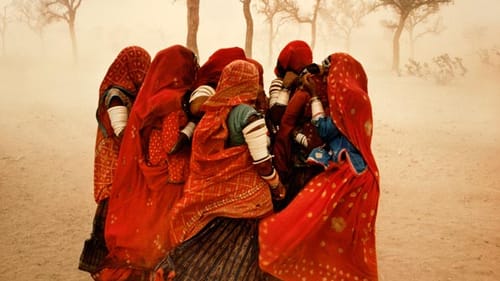Looking the world in the eye
Steve McCurry: India at the Rubin Museum of Art

Photographer Steve McCurry, a 1974 Penn State grad, reached international renown when his picture of the green-eyed “Afghan Girl,” taken during the war in Afghanistan, appeared on the cover of National Geographic in 1985.
That wasn’t just a lucky fluke. The genius of his photographic eye, capturing radiant images of the Middle East, Southeast Asia, Himalayan regions, and around the world, is viewable in seven publications by Phaidon Press. The latest, Steve McCurry: India, came out in sync with a marvelous exhibit of the same title at the Rubin Museum of Art in New York City. The exhibit features almost 40 of McCurry’s photographs, hung in clusters based on where they were taken, from as far north as Leh all the way south though Mumbai to Bylakuppe, between 1982 and 2014. I took in the show slowly over several hours and then returned two days later for good measure.
McCurry gives us unexpected glimpses of unguarded moments, urban and rural. The photographs feature people, directly or indirectly: They include portraits, landscapes with people, and photos of historic sites — places that hint at people. The faces are about light, the clothing is about line and fold, the places are about shape, and everything is about color. In fact, it was because of India — which he first visited in 1978 — that McCurry was moved to transition from black-and-white to color.
McCurry has said that as a photographer, he is “sustained by the rhythms of everyday life.” Drawn to routines like herding and fishing, and to the sounds and sights of temple praying and street selling, he is curious about the ways humans sleep, eat, and keep warm. Documenting the “infinitely varied ways we meet these fundamental human needs” has been his profound photographic journey.
Photographs of questions, not answers
These pictures of India made me consider these questions as well. Take, for example, Mother and Child at a Car Window (Mumbai, 1993): A young mother and child stand in the rain looking through a car window. Who are these evocative female persons with their dark open faces, big eyes, and robed garments? Where do they live — how do they keep warm and dry? Are they begging that they are at a car window and is that how they eat?

McCurry has written: “Walking around, just capturing moments, that’s a major component of my photography.” The pictures of India reveal McCurry as an artist imbued with the virtue of patience. Unquestionably, he waits. I don’t believe the moments just show up. My sense is, McCurry is there, somewhere, in a back street, and he sees or hears or feels something of potential, he senses an air of being and becoming, and he waits and he waits and he waits and a moment arises. One such photo is Boy in Mid-Flight (Jodhpur, 2007). The subject is caught fleeing into a narrow alleyway where a wall is inexplicably filled with giant red handprints.
Early in the 1980s, McCurry became interested in the monsoon, a season of passionate weather, in order to explore the complexity of events, from flooding to dust storms. McCurry says of Tailor Carries His Sewing Machine through Monsoon Waters (Gujarat, 1983), “One afternoon I spotted this man walking down the middle of the street with the sewing machine on his shoulder. He was a tailor, and the sewing machine represented his livelihood. Unfortunately the machine was ruined.” But when the photo — in which the man is smiling — appeared on the cover of National Geographic, the machine’s manufacturer sent him a new one.
The most beautiful turbulent weather photo must be McCurry’s Dust Storm (Rajasthan, India, 1983). Six or seven women, swathed in the deepest of orange-red and burgundy cloth, huddle together to shield themselves, heads bowed, their backs to us and faces covered in fabric, barely able to stand near a troop of flimsy trees. As McCurry wrote, “In the strange, dark-orange light and the howling wind, battered by sand and dust, they sang and prayed.” It is, he says, perhaps his favorite photograph.
Author’s note: I met Steve McCurry seven years ago through my friend Michael Carroll, who has been a buddy of McCurry’s since their teenage years in Newtown Square. Michael was the executive producer of a theater piece I’d written, set in Tibet, and he received McCurry’s permission to enlarge a gloriously blue mystical landscape photo of Yamdrok Lake (2004), near Lhasa in Tibet, to create a backdrop for the performance.
The production premiered at Villanova University in 2009. In conjunction with the play, through Michael’s influence, McCurry permitted the Villanova University Art Gallery to mount the first local exhibit of his photographs, entitled Looking East. At that exhibit, McCurry gave me an inscribed poster of Dust Storm.
What, When, Where
Steve McCurry: India. Through April 4, 2016 at the Rubin Museum of Art, 150 West 17th St., New York. 212-620-5000 or rubinmuseum.org.
Sign up for our newsletter
All of the week's new articles, all in one place. Sign up for the free weekly BSR newsletters, and don't miss a conversation.

 Joanna Rotté
Joanna Rotté